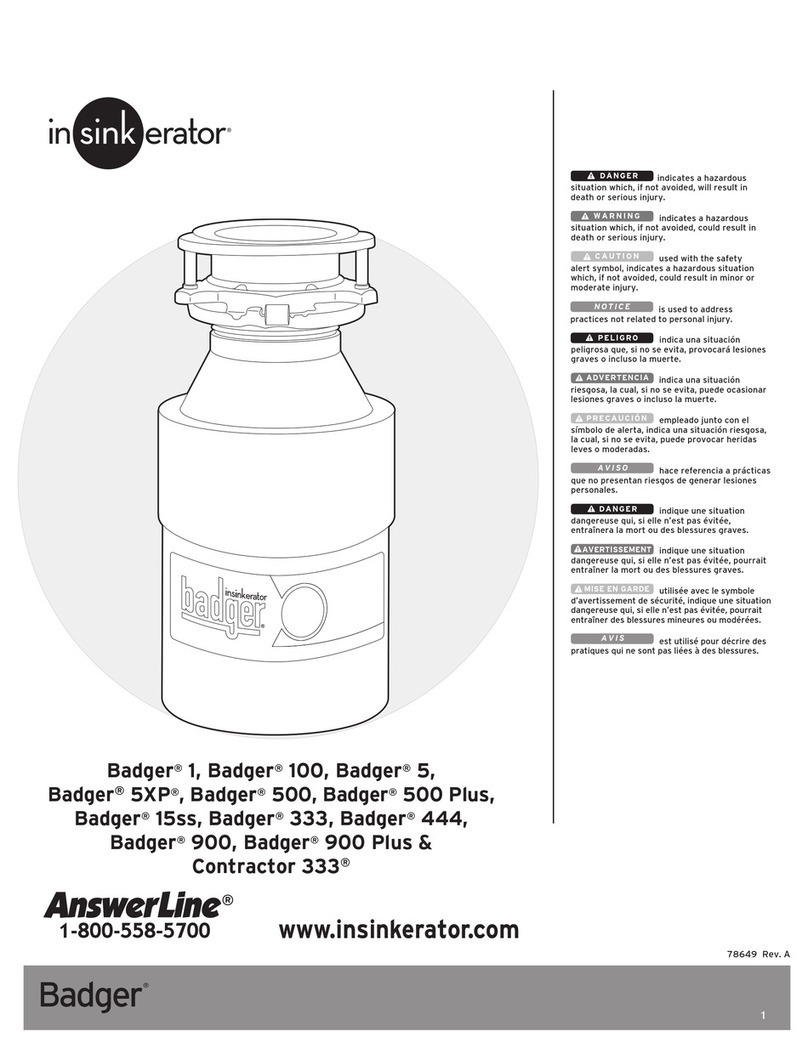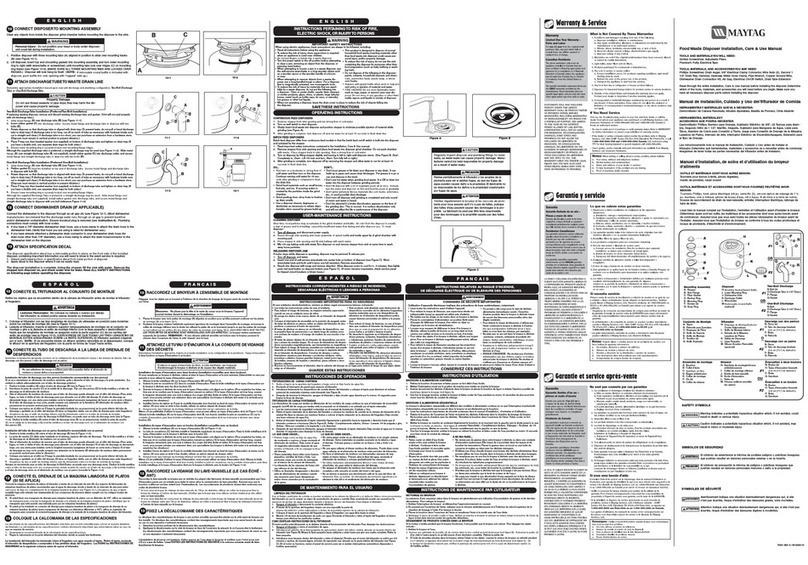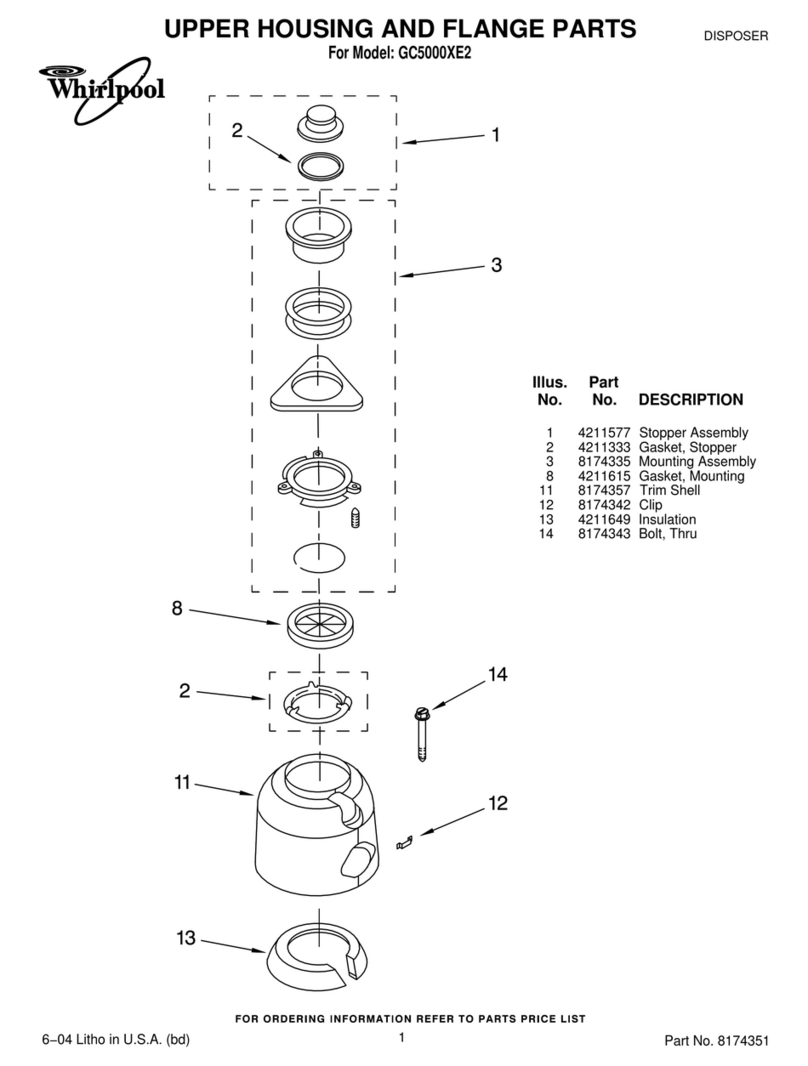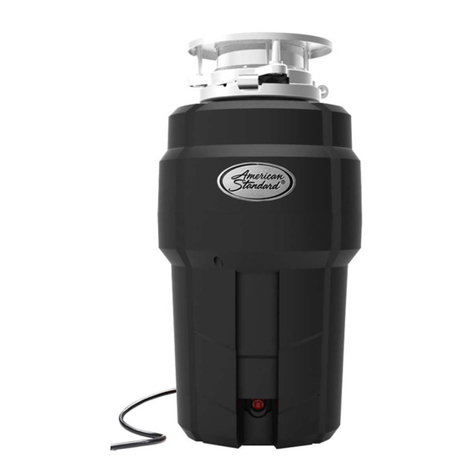Delitek AS DT-200i Troubleshooting guide

Delitek Waste Compactors – user -/service manual-rev 1.2
DT-200i “Green Ship” Waste Compactor – standard versions 1
Model:
DT-200i Waste Compactor
(STANDARD VERSION)
User-/service manual
Delitek AS, Moloveien, N-8432 ALSVAAG, NORWAY
Tel. (International): +47 76 13 47 00, Fax (International): +47 76 13 42 77

Delitek Waste Compactors – user -/service manual-rev 1.2
DT-200i “Green Ship” Waste Compactor – standard versions 2
IMPORTANT SAFETY INSTRUCTIONS:
Please follow these precautions when using this product:
1. Read carefully through and follow the instructions given in this manual
2. Pay attention to all warnings.
3. Installation must be done in accordance to this manual.
4. Protect and avoid the power cable from being walked on, driven over etc. Do not
bend the power cable close to the connections.
5. Use only original spare parts approved and recommended by Delitek AS.
6. Qualified personnel only must perform repairs and services.
7. WARNING: Do not expose the el-locker or el-engine with direct spurt of
water.
8. The compactor must be placed in an environment that has an operating temperature
between minimums –25 degrees Celsius to maximum 60 degrees Celsius.
9. WARNING: The compactor is normally transported standing upright vertically, on a
wooden transport frame (ISPM#15). The transport frame is lifted/relocated by using a
forklift or a jack-trolley. Note: lifting is done by the indicated lifting pockets. If the
waste compactor needs to be lifted after the compactor is unpacked, this must be
done with certified lifting straps around compactor house.
10. WARNING: Do not lift the compactor by using holes on the compactor house or other
parts of the compactor that is not suited for a lifting operation.
11. WARNING: The safety distance for the compactor-operator should be at least 1
meter. No persons must be standing in front of the compactor opening during the
compaction cycle.
12. The compactor is designed to compress mixed consumer waste such as paper,
various plastic waste, paperboard, tin-boxes, packaging, food waste etc. If several
containers are used, the waste should be segregated by source according to IMO/
MARPOL 73/78 annex V. By doing this you will also obtain a higher degree of
compaction.
13. WARNING: Waste that is considered as ”hazardous” or “special category waste”
must never be deployed or compressed in the container. Because of fire and
explosion hazard, never deploy hot ashes or any type of gas domes into the waste
compactor.
14. Ensure that the control panel and the area around the compactor have sufficient
lighting according to working environment law at site.
15. Qualified personnel must perform a function test of security switches/emergency
switch at regular intervals. See chapter 6 for service/maintenance of the compactor. If
a malfunction appears when the system is running and pressurized, contact Delitek
AS to get a description on how to get the pressure balanced.
WARNING!
The standard versions of the DT-200i must be installed in an unclassified
zone onboard ships or offshore rigs. Only Ex-proof versions of the Delitek
compactors can be used in hazardous areas.

Delitek Waste Compactors – user -/service manual-rev 1.2
DT-200i “Green Ship” Waste Compactor – standard versions 3
Note: All following dimensions are in metric millimetres.
TABLE OF CONTENTS:
1.0INSTALLATION INSTRUCTIONS...............................................................................4
1.1 Installation of the compactor to steel or wooden deck.......................................................4
1.2 Connection to electric supply.............................................................................................5
1.3 Checking phase/el-motor direction of rotation...................................................................5
1.4 Changing the electric configuration ...................................................................................6
1.5 Final preparation ................................................................................................................8
1.6 Installation procedure for detachable manometer ..............................................................9
1.7 Access ramp .....................................................................................................................10
1.8 Disassembling the compactor...........................................................................................10
1.9 Pre- installation checklist .................................................................................................10
2.1 Instructions for use, DT-200i: ..........................................................................................11
2.2 DT-200i General arrangement .........................................................................................12
2.3 C-200 container General arrangement .............................................................................13
2.4 Operating the compactor ..................................................................................................14
3.0 USING HD PLASTIC BAGS IN THE CONTAINER........................................................15
3.1 Plastic bags.......................................................................................................................15
3.2 Installing the HD Plastic bag in the container..................................................................15
3.3 Deploying full plastic bags...............................................................................................16
3.4 Using the bailing option. ..................................................................................................17
3.5 Containers with aluminium covers...................................................................................20
4.0 HYDRAULIC SYSTEM......................................................................................................21
4.1 Hydraulic system DT-200i...............................................................................................21
4.2 Hydraulic piping diagram.................................................................................................22
5.0 ELECTRIC DIAGRAMS ....................................................................................................23
5.1 400-480V..........................................................................................................................23
5.2 220-240V..........................................................................................................................24
5.3 660-690V..........................................................................................................................25
5.4 Electric panel, part 1.........................................................................................................26
5.5 Electric panel, part 2.........................................................................................................27
5.6 Wiring diagram 400V/230V (“Y” or “∆” configuration).................................................28
6.0 SERVICE/MAINTENANCE...............................................................................................29
6.1 Service/Maintenance plan ................................................................................................29
6.2 Surface treatment..............................................................................................................29
7.0 TECHNICAL SPECIFICATIONS ......................................................................................30
7.1 DT-200i ............................................................................................................................30
8.0 SPARE PARTS AND HD PLASTIC BAGS.......................................................................31
8.1 Ordering information........................................................................................................31
8.2 Service and technical information....................................................................................31
9.0 WARRANTY.......................................................................................................................32
9.1 General conditions............................................................................................................32
10.0 TROUBLESHOOTING GUIDE........................................................................................33
10.1 Troubleshooting .................................................................................................................33
11. APPENDIX 1 .......................................................................................................................35
11.1 DnV Certification...........................................................................................................35
12. APPENDIX 2 .......................................................................................................................36
12.1 Spare part list..................................................................................................................36

Delitek Waste Compactors – user -/service manual-rev 1.2
DT-200i “Green Ship” Waste Compactor – standard versions 4
1.0 INSTALLATION INSTRUCTIONS
1.1 Installation of the compactor to steel or wooden deck.
Before installation: Note that the compactor must be placed in an environment with operating
temperatures between minimum –25 degrees Celsius to maximum 60 degrees Celsius
(minimum -13 to maximum 140 degrees Fahrenheit). Ensure that the control panel and the area
around the compactor have sufficient lighting according to working environment law at site. In
addition, each country’s legislation and Health, Environment & Safety regulations regarding
operation of this kind of products must be followed.
Installation:
If the compactor is installed on board a ship or offshore installation, the mounting brackets must
be welded to a steel surface or alternatively mounted to wooden deck with 8mm bolts.
WARNING: It is very important to cover up the stainless steel surface on the waste compactor in
order to avoid spatter from the welding onto the steel. Welding and work with angle grinders
nearby the waste compactor must always be avoided as this will damage the protective oxidizing
coating on the waste compactor. This again will cause surface corrosion.
Lifting of the waste compactor must be done with certified lifting straps around the compactor
house only. Do not attempt to lift the compactor by using holes on the compactor house or other
parts of the compactor that is not suited for a lifting operation.
We recommend the following mounting procedure:
1) Place the waste compactor exactly where it is planned to be installed.
2) Align the mounting brackets to the corners of the waste compactor. The mounting
brackets are then spot welded onto deck.
3) Remove the upper nuts on mounting brackets (see fig. 1)
4) The waste compactor is lifted aside and covered to avoid splatter from welding etc.
5) The mounting brackets are all welded to the steel surface.
6) The waste compactor is then lifted in position again and carefully placed upon the
mounting brackets.
7) Please check that the waste compactor is levelled to the deck. If necessary adjust the
waste compactor by turning the lower nuts on the mounting brackets.
8) Replace the upper nuts on the mounting brackets.
Figure 1. Mounting brackets

Delitek Waste Compactors – user -/service manual-rev 1.2
DT-200i “Green Ship” Waste Compactor – standard versions 5
Figure 2. Dimension sketch DT-200i, bottom view of mounting brackets (centre).
WARNING!
In order to avoid possible damages on equipment and personnel, extra containers onboard must
at all times be secured. The C-200 containers are designed so that they will not be able to freely
roll, as long as they are parked. However, if stored on open deck: the containers must at all
times be properly secured with straps or other suitable devices.
1.2 Connection to electric supply
Connection of el-supply must de done by a qualified electrician.
Be sure to check that the voltage specified for the waste compactor complies with the el-supply
at site. Check the voltage specification on the compactors nameplate and on the attached
Factory Acceptance Test sheet.
Note: guide tubes, nipples, bushings, gaskets and sealing on the el-locker should be
inspected during installation. This equipment must also be checked during maintenance and
function tests of the compactor. Check for damages on door gasket or water leakages into the
el-locker. The el-locker must always be closed (except from maintenance purposes).
1.3 Checking phase/el-motor direction of rotation
Figure 3. Connection terminals Figure 4. Direction of rotation

Delitek Waste Compactors – user -/service manual-rev 1.2
DT-200i “Green Ship” Waste Compactor – standard versions 6
The 3 phase main el-supply is connected to the connection terminals 1, 2 & 3 as showed in
fig. 3. After the connection of the el- wires, it is crucial to check the direction of rotation of the el-
motor. If the connection is done correct, the el-motor will turn in the same direction as the arrow
indicates, counter clockwise (see fig. 4). If the el-motor turns in the opposite direction the phases
are wrongly connected. The motor will start, but the hydraulic system will not function properly.
Please swap wires of terminals 1, 2 & 3 in order to correct this.
1.4 Changing the electric configuration
Normally, the waste compactor is configured for either 220V or 380~440VAC (480VAC with
special transformer). However, the electric configurations can be changed afterwards from one
to the other option. This procedure must always be performed by a qualified electrician.
WARNING!
Be sure to completely disconnect the el-supply to the waste compactor before rewiring starts.
Two important procedures must then be performed:
1. The el-motor must be rewired from ”Y” (440V) to ”∆”(220V) configuration or vice versa,
by rearranging the jumpers in the junction box on top of the el-motor. See also diagram
in chapter 5, section 6.
Remove the four screws in the lid on top of the el-motor and remove the lid completely
(see fig. 5). Arrange the jumpers according to the selected voltage.
(”Y” (440V) or ”∆” (220V) and diagram in chapter 5, section 6.
2. The connections for the transformer for 380-440V voltages must be checked and
reconfigured if necessary before el-supply is connected again (see fig. 6).
The transformer is located inside the el-panel. All components in the el-panel are running
on 220V only. The transformer is used for transforming input voltages of 380~440V
(480V) down to 220V for the components in the el-panel.
Figure 5. Y- ”Star” configuration Figure 6. Transformer bypass

Delitek Waste Compactors – user -/service manual-rev 1.2
DT-200i “Green Ship” Waste Compactor – standard versions 7
a) If the input voltage is 380~440V (480V), the el-supply for the el-panel must be
taken from/ connected to the 220V output at the top of the transformer. The
jumpers on the el-motor must be set for ”Y” STAR (440V) configuration
according to paragraph 1.
b) If the input voltage is 220V, the transformer must be bypassed. Fig. 6 shows a
bypassed transformer. The el supply to the el-panel is parallel connected to the
input el-supply. I.e the voltage is not passing through the transformer at all. The
jumpers on the el-motor must be configured for ”∆” Delta (220V) configuration
according to paragraph 1.
.
3. When the reconfiguring of the el-system is completed, please connect the waste
compactor to the selected el-supply.
See also chapter 5 for connection diagrams and schematics regarding rewiring.
WARNING!
THIS PROCEDURE IS NOT POSSIBLE TO PERFORM FOR COMPACTORS
DELIVERED WITH 660~690V motors.

Delitek Waste Compactors – user -/service manual-rev 1.2
DT-200i “Green Ship” Waste Compactor – standard versions 8
1.5 Final preparation
IMPORTANT INFORMATION!
The hydraulic power pack is delivered with an
airtight temporary filling cap (see fig 7), in order to
avoid oil spill during transport.
To avoid damages or breakdown of the
hydraulic system, it is necessary to replace
the temporary filling cap with the enclosed
standard dipstick, before the compactor is set
into normal operation.
The temporary filling cap is located on top of the
hydraulic oil tank on the el- motor (see figure 7).
Replace the airtight filling cap with the enclosed
standard dipstick that should be found inside the
el-panel.
NOTE: If the dipstick is missing from the package,
please contact Delitek AS immediately.
See Chapter 8, contact information.
Checking hydraulic oil level:
Check the oil level in the hydraulic oil tank. The oil level should normally be between 55mm and
65mm up on the dipstick in the hydraulic oil tank.
Start the waste compactor and run the piston to its outer (lowest) position and back again.
Check the oil level again and refill if necessary. Oil with specifications similar to Nuto H32/Esso
Univis N32 or equivalent must be used.
Avoid spill of hydraulic oil and also avoid the hydraulic system to be exposed for dust and dirt
during maintenance of the hydraulic system. Use certified protective clothing and equipment
according to working environment law at site. In addition, each country’s legislation regarding
operation of this kind of products and Health, Environment & Safety regulations must be always
followed.
IMPORTANT INFORMATION!
After installation, the compaction cycle should be run approximately 10 times with an empty
container or without container. This is to ensure that there is no air trapped in the hydraulic
system.
Figure 7. Dipstick

Delitek Waste Compactors – user -/service manual-rev 1.2
DT-200i “Green Ship” Waste Compactor – standard versions 9
1.6 Installation procedure for detachable manometer
A detachable manometer for service/controls of the hydraulic pressure is enclosed with the
delivery. Hydraulic pressure is preset to 160Bar and should not be altered without authorization
from Delitek AS.
The manometer is from the factory enclosed inside the el-panel, together with the dipstick for the
hydraulic tank and FAT (Factory Acceptance Test) certificate.
Procedure for checking the hydraulic pressure:
1. Locate the detachable manometer.
2. Switch off the main power supply to the waste compactor.
3. Locate and detach the protection cap on top of the hydraulic
power pack (see fig. 8).
4. Attach the manometer firmly on the screw thread coupling
(see fig. 9).
5. Switch on the main power supply to the waste compactor
and run a few compaction tests with a fully loaded container.
Read out the manometer when the waste compactor
reaches full pressure during the compaction cycle. If the
hydraulic pressure for some reason not conforming
approximately to the preset value from the factory, please
contact Delitek AS. The hydraulic pressure is normally 160
Bar for the DT-200i. Do not attempt to adjust the pressure
without contacting Delitek AS first.
6. To prevent the manometer from being damaged, please
detach it again after the testing procedure is finished and
store it in an appropriate place.
IMPORTANT INFORMATION:
To prevent the manometer from being damaged, please detach it again after the testing
procedure is completed and store it in an appropriate place.
Figure 8. Protection Cap
Figure 9 Manometer

Delitek Waste Compactors – user -/service manual-rev 1.2
DT-200i “Green Ship” Waste Compactor – standard versions 10
1.7 Access ramp
The compactor is equipped with an access ramp for easy loading
and unloading of containers. The access ramp (see figure 10) must
be folded out before use. The access ramp is marked with red colour in
figure 10, and showed in upright position.
1.8 Disassembling the compactor
Disassemble the compactor in the opposite order to which it has been assembled.
1.9 Pre- installation checklist
Place the waste compactor package as close as possible to the mounting area.
The compactor is normally packed on a wooden transport frame (ISPM#15), and covered
in plastic. Unpack the waste compactor and remove all crating and plastics. Check for
any damages.
The compactor can be moved by using a jack-up-trolley or fork-lift. In addition, lifting
equipment such as a crane may be used, but note that certified lifting straps around the
compactor house must be used. Do not attempt to lift the compactor by using any holes
on the compactor house or other parts of the compactor that is not suited for a lifting
operation.
Place the compactor on the exact mounting position. See section 1.1 for mounting
details.
Open the el-panel and check that it contains the standard dipstick for the hydraulic oil
tank and the manometer for service/checks of hydraulic pressure. Contact Delitek AS if
these items missing. See sections 1.5 and 1.6 for installation procedures for dip-stick and
manometer.
An authorized electrician must connect the compactor to the onboard el-supply. See
section 1.2 and 1.3. Please check that the compactors el-specifications comply with the
onboard el-supply.
The temporary transport cap on the tank for the hydraulic oil must be replaced with
standard dipstick found in the el-locker. See section 1.5 for this procedure.
Check the rotating direction on the el-motor according to section 1.3. If the el-supply is
correctly connected, the el-motor will rotate counter clockwise according to the arrow
symbol on the el-motor.
CONGRATULATIONS WITH YOUR NEW WASTE COMPACTOR! 2.0 OPERATING
INSTRUCTIONS
Figure 10. Access ramp

Delitek Waste Compactors – user -/service manual-rev 1.2
DT-200i “Green Ship” Waste Compactor – standard versions 11
2.1 Instructions for use, DT-200i:
Figure 11. Instructions for use (as shown on the compactor).
IMPORTANT INFORMATION:
The DT-200i waste compactor is not designed to handle solid materials such as metal bars,
timbre or wooden pallets etc. This may lead to severe damages on the waste compactor.
It is also recommended to try to distribute the waste evenly in the container to avoid
unnecessary strain on the press plate.
Special category waste, glass and waste that belongs in the hazardous waste category must
never be deployed in the waste compactor.

Delitek Waste Compactors – user -/service manual-rev 1.2
DT-200i “Green Ship” Waste Compactor – standard versions 12
2.2 DT-200i General arrangement
Figure 12. Delitek DT-200i waste compactor

Delitek Waste Compactors – user -/service manual-rev 1.2
DT-200i “Green Ship” Waste Compactor – standard versions 13
2.3 C-200 container General arrangement
Figure 13. Delitek C-200 container GA

Delitek Waste Compactors – user -/service manual-rev 1.2
DT-200i “Green Ship” Waste Compactor – standard versions 14
2.4 Operating the compactor
Place the C-200 container into the compactor chamber, and secure it with the safety bar. When
the container is fully loaded with waste, you are ready to run the compaction cycle. Close the
loading hatch and remember that the safety bar always must be in place and secured when the
compacter is running (failing to do this may damage the hydraulic press plate and the piston).
Note that the compactor has an emergency switch that prevents operation as long as the
loading hatch is open.
The operator must visually check if the container is fully loaded. The container is considered fully
loaded when the quantity of compacted waste reaches the lower part of the loading opening and
at the same time the upper edge of the waste container. When the container is near full, the
operator will discover that the unit builds up pressure earlier in the compaction cycle. This is also
an indication that the container is full and that the plastic bag should be replaced.
Stop the compaction cycle, remove the safety bar and remove the container from the compactor
chamber.
IMPORTANT INFORMATION:
In case of any accident/injury, the emergency switch must be pushed immediately. In order to let
the hydraulic piston return to its upper position, reset the unit by pushing the start button once
again.
NOTE! If waste with a high degree of expansion (cardboard, plastic etc.) is compacted, it is
recommended to push the emergency switch (see fig. 14) after the compactor has built up
pressure in its lower position. Leave the press plate in its lower position as long as possible. This
is useful for removing air pockets in the waste. By doing this you will achieve a higher degree of
compaction.
Start the compactor/ aggregate by pushing the start
button on the el-panel (see fig. 14) and hold it for 2-3
seconds. The compactor will now run trough the
compaction cycle (40-70 sec., depending on timer
settings). The compactor will automatically stop when
the cycle is finished
If the compactor is stopped by using the emergency
switch, stop button, or if the safety switch in the
loading hatch is triggered, the press plate will return to
its upper position and the system will reset. The
control lamp (voltage on) is lit whenever there is
voltage coming into the el-panel.
Figure 14 El- panel

Delitek Waste Compactors – user -/service manual-rev 1.2
DT-200i “Green Ship” Waste Compactor – standard versions 15
3.0 USING HD PLASTIC BAGS IN THE CONTAINER
3.1 Plastic bags
The DT-200i waste compactor is designed for compacting waste in our
heavy duty plastic bags. The bags are custom made for the C-200
container. Avoid deploying sharp objects (metal/ glass etc.) when using
HD plastic bags. This may damage the bag.
In order to have the possibility to segregate the waste according to
MARPOL 73/78- annex V guidelines, it is recommended to have a
system consisting of two or more containers.
Recommended segregations are:
1) Mixed waste (mixed consumer waste)
2) Metal/aluminum (tins, soda boxes and other metal boxes)
3) Plastic, PVC
4) Paper/cardboard
Special category waste, glass and waste that belongs in the hazardous waste category must
never be deployed in the waste compactor.
The HD Plastic bags are specially designed for the C-200 containers and can be ordered
from Delitek AS. See chapter 8.0 for ordering information.
WARNING:
Always use original HD Plastic bags from Delitek AS. Delitek AS takes no responsibility for
damages or injuries caused by use of unoriginal bags or bags not intended for our machines.
3.2 Installing the HD Plastic bag in the container
Take one bag from your onboard stock and unfold it. Place the plastic bag in the container and
fold the upper part over the top edge of the container. Let there be a 10~20 cm border on the
outside of the container. Use the standard strap (3 meter) that was included in the delivery and
strap the bag firmly in the upper edge of the container (see fig. 16). This is necessary in order to
prevent the plastic bag from being dragged down into the container during operation.
The container is now ready for use.
Figure 16. HD Plastic bag in C-200 container

Delitek Waste Compactors – user -/service manual-rev 1.2
DT-200i “Green Ship” Waste Compactor – standard versions 16
3.3 Deploying full plastic bags
When the plastic bag is full and ready for deployment, you
may roll the whole container from the compactor unit and
directly to the place of deployment.
Remember that you will have to tilt the container in order to
roll the container.
Remove the strap around the bag. Open the door in front of
the container and remove the bag easily, without any need for
lifting over the top of the container (see fig. 17).
In order to seal the plastic bag before deployment, we
recommend using a standard plastic strip of 20~30 cm (see
fig.18). This is an easy and very fast method for sealing the
bag.
You can of course also use other methods such as standard
brown packaging tape or just tie it with rope, whatever is most
convenient.
NOTE: For collection and easy deployment of bags to
shore, it is possible to collect the smaller plastic bags
onboard in larger “Big Bags”. This bags can later be
removed from the vessel by the ships crane. They are
are equipped with four lifting loops on top (and one in the
bottom for emptying purpose) and has an SWL 1000KG
(see fig. 19). “Big bags” can be ordered from
Delitek AS. See chapter 8.0 for ordering information.
WARNING:
International weight limits sets a limit of 25 kg for manual lifting. Normally the output from the
DT-200 will not exceed 25 kg, but be aware of this restriction when lifting full bags.
Figure 17. Open door container
Figure 19. “Big bags”
Figure 18. Sealing the bag

Delitek Waste Compactors – user -/service manual-rev 1.2
DT-200i “Green Ship” Waste Compactor – standard versions 17
3.4 Using the bailing option.
As an option, the DT-200i can perform baling of the waste. This is especially handy for the
paper/cardboard and the plastic/PVC fraction. Those materials often tend to expand back to
original shape after being compacted. However, this can effectively avoided by strapping the
bag firmly before it is removed from the chamber.
There are two ways of doing this:
1) Baling paper/cardboard without using the plastic bag
2) Baling recyclables in a plastic bag.
If you chose the first method, it is recommended to start out with laying a larger cardboard piece
in the bottom after first having performed steps 1 & 2 below (you will also need one similar piece
to put on top of the bale right before strapping). This in order to keep the waste collected after
the strapping procedure is finished. You may then follow step 4-10 in the procedure below.
In the following description we will just focus on the second method, baling in plastic bags.
Step 1:
First you will need to cut two (2) lengths of approx. 3m
each of a standard baling/strapping band (see fig. 20) VG
strapping band can also be ordered from Delitek AS. See
chapter 8 for order information.
Step 2:
Lay out the strapping bands inside the container and
make two small loops to attach on the hooks on the rear
side of the container. Open the door of the container and
lay the straps out on the floor in front of the container.
Close the door again and knit the straps in the door
handle (see the picture series in fig. 21).
Figure 20.Strapping band
Figure 21. Preparing the strapping bands

Delitek Waste Compactors – user -/service manual-rev 1.2
DT-200i “Green Ship” Waste Compactor – standard versions 18
Step 3:
Place one (1) HD plastic bag in the container as
described in chapter 3.2. (covering the strapping
bands inside the container).
Step 4:
Load the container and bag with waste. Note
that the container should be full of waste in
order to get a good result (the waste may need
to be compacted several times). When the
container is considered full, you are ready to
start the baling procedure.
Step 5:
Open the hatch on the waste compactor and
remove the safety bar.
Roll the container halfway out of the chamber.
Loosen the strapping band loops at the rear
side of the container and pull them towards you.
Tread the baling straps on the rear hooks on top
of the press plate. Then tread it in the channel
underneath the press plate and finally attach the
straps in the front hooks on top of the press
plate (see fig. 22).
Roll the container into the camber again, attach
the safety bar and close the hatch.
Step 6:
Start the waste compactor and run the
compaction cycle. As the waste compactor
reaches its maximum pressure (you will at this
point hear a change in the sound from the
hydraulic aggregate), you must stop the
compactor by pressing the red emergency stop
button (see fig. 14).
You may read out the max pressure on the
manometer (if attached). When the manometer
reaches approx. 160 bars (see fig. 23), you
must press the emergency stop button.
By pressing the emergency stop button, the
press plate will now rest on top of the bale at
maximum pressure, without returning to its
upper position.
Figure 22. Attaching straps.
Figure 23. Manometer read out.

Delitek Waste Compactors – user -/service manual-rev 1.2
DT-200i “Green Ship” Waste Compactor – standard versions 19
Step 7:
Open the hatch on the waste compactor and
remove the safety bar.
Loosen the strapping bands from the door-
handle and lay them out on the floor. Open the
door on the container, while it’s still inside the
compaction chamber.
Step 8:
Loosen the loops from the hooks on the press
plate (see fig. 24) and pull them a 5-10 cm
towards you.
Pull up the loose ends on the floor and knit them
firmly to the loop ends as shown in fig. 25.
Step 9:
Close the door on the container, attach the
safety bar and close the hatch of the compactor.
Reset the waste compactor by first turning the
emergency button clockwise and then press the
start button. The press plate will now return to
its upper position.
Step 10:
When the reset procedure is finished:
Open the hatch on the waste compactor and
remove the safety bar.
You can now roll out the container and deploy
the finished bale (see fig. 26)
Figure 25. Strapping of bale 2.
Figure 24. strapping of bale 1.
Figure 26. Strapping of bale 3.

Delitek Waste Compactors – user -/service manual-rev 1.2
DT-200i “Green Ship” Waste Compactor – standard versions 20
3.5 Containers with aluminium covers
The C-200 containers can be fitted with a special aluminium
cover (see fig. 27). These covers are very handy to use for
different reasons:
1) Offensive odour from waste will be strongly reduced.
2) If the containers are placed out on open deck, the cover
will avoid that the waste will be spread out of the
container by wind and heavy weather.
3) Covers on all containers will seal the waste inside
strongly reduce the fire hazard onboard.
4) The cover will prevent rainwater and spray of seawater
from coming into the container.
Normally the covers for the containers are included in the delivery if you have ordered a
system with two or more containers.
Spare aluminium covers for the C-200 container can be ordered from Delitek AS.
See chapter 8.0 for order information.
Figure 27. C-200 container with cover
Table of contents
Popular Garbage Disposal manuals by other brands
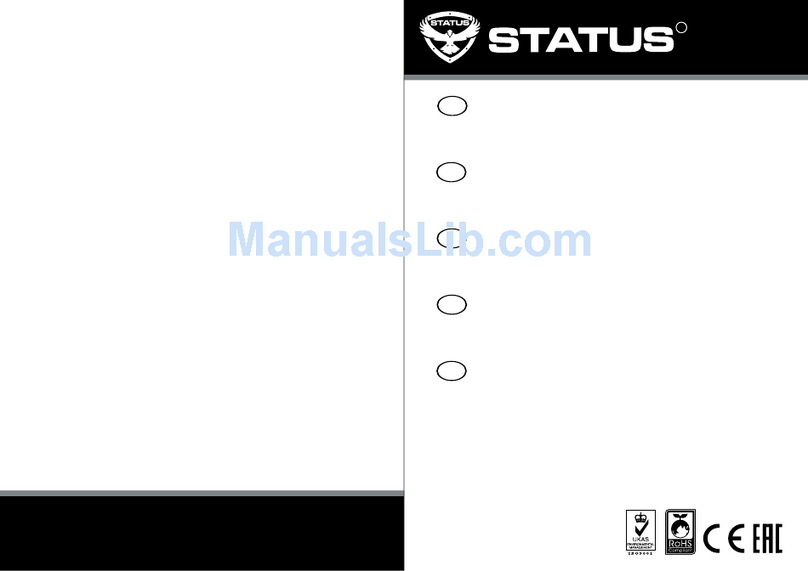
Status
Status PREMIUM 100 operating instructions
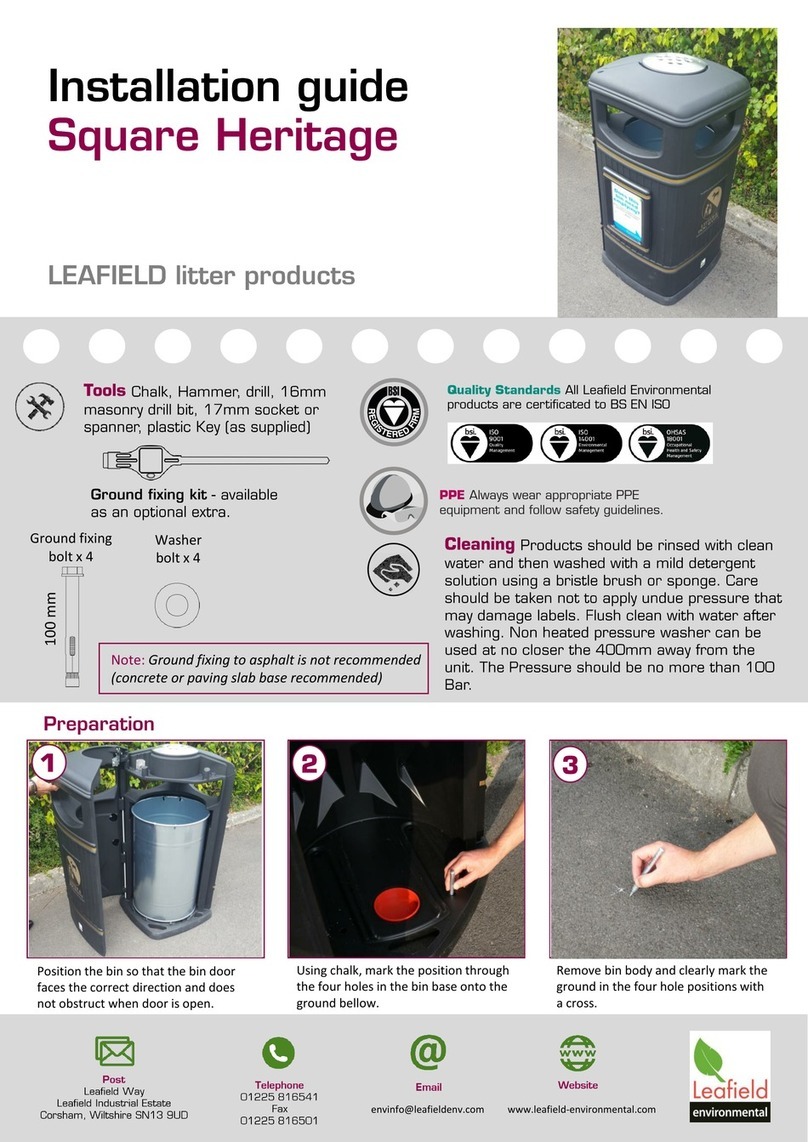
Leafield Environmental
Leafield Environmental Square Heritage installation guide
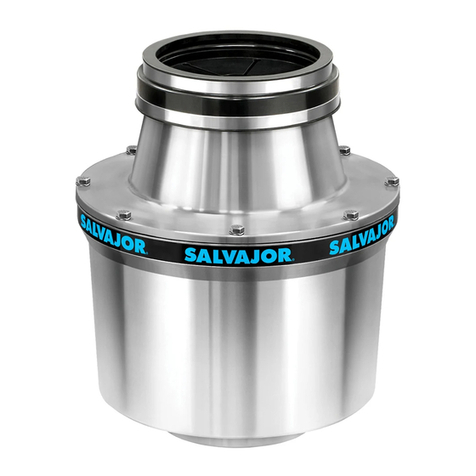
Salvajor
Salvajor 100 Instructions and operating manual
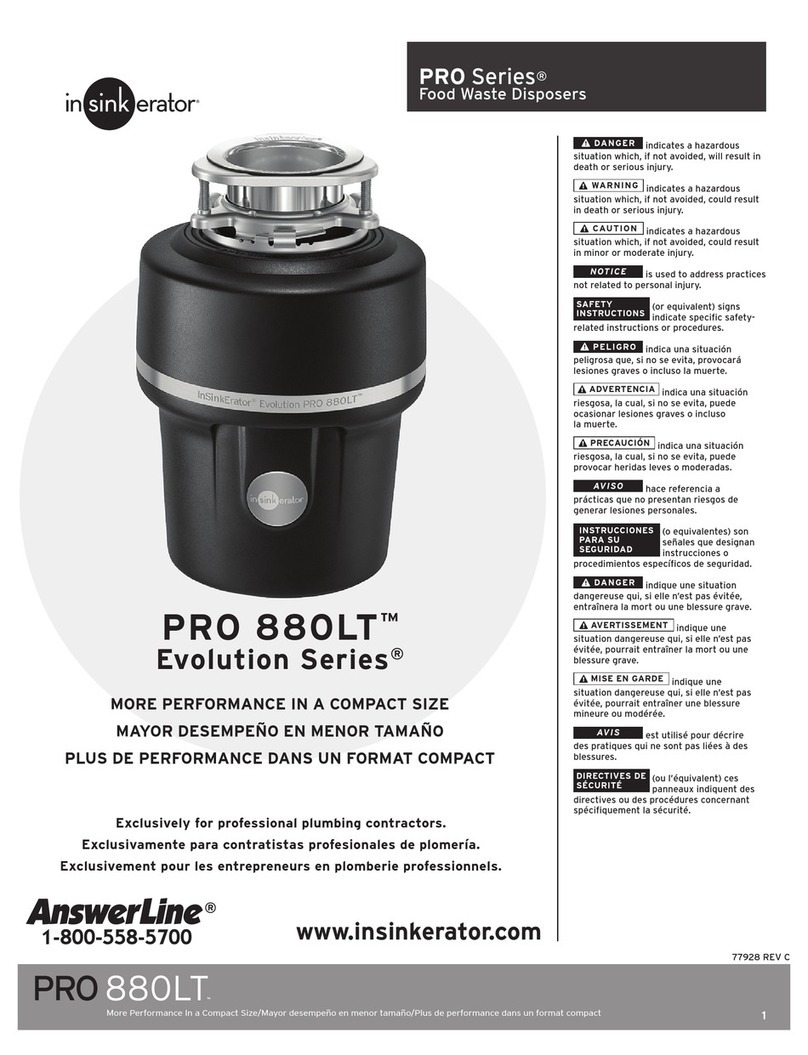
InSinkErator
InSinkErator Evolution PRO 880LT manual

Newstripe
Newstripe AeroVent 1 Operation guide

Humboldt
Humboldt h-4169 product manual
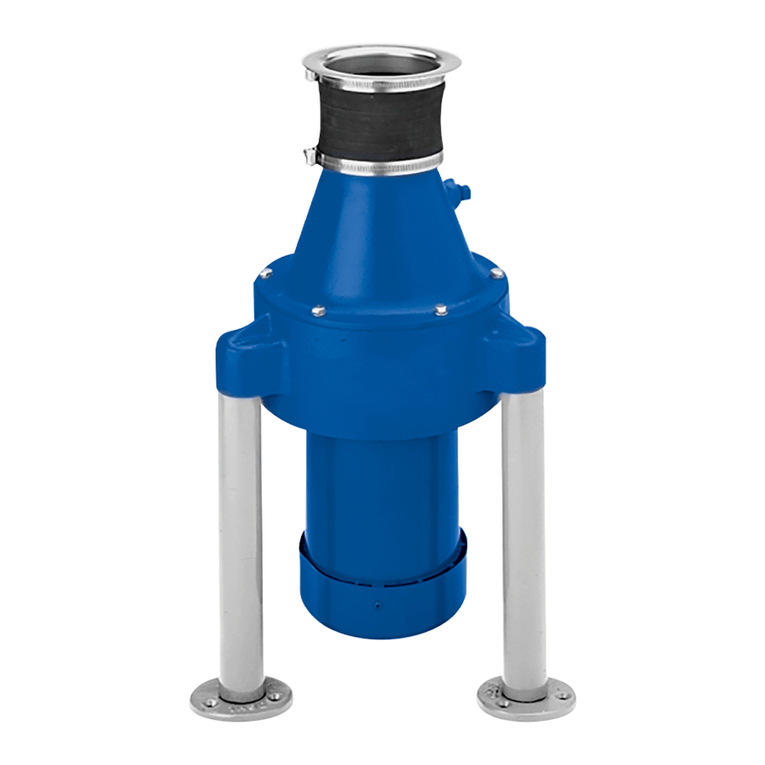
Insinger
Insinger N-8 brochure

KitchenAid
KitchenAid KBDS100T - NA Batch Feed 1 HP MultiGrind quick guide

KitchenAid
KitchenAid KCDI075VA Limited warranty
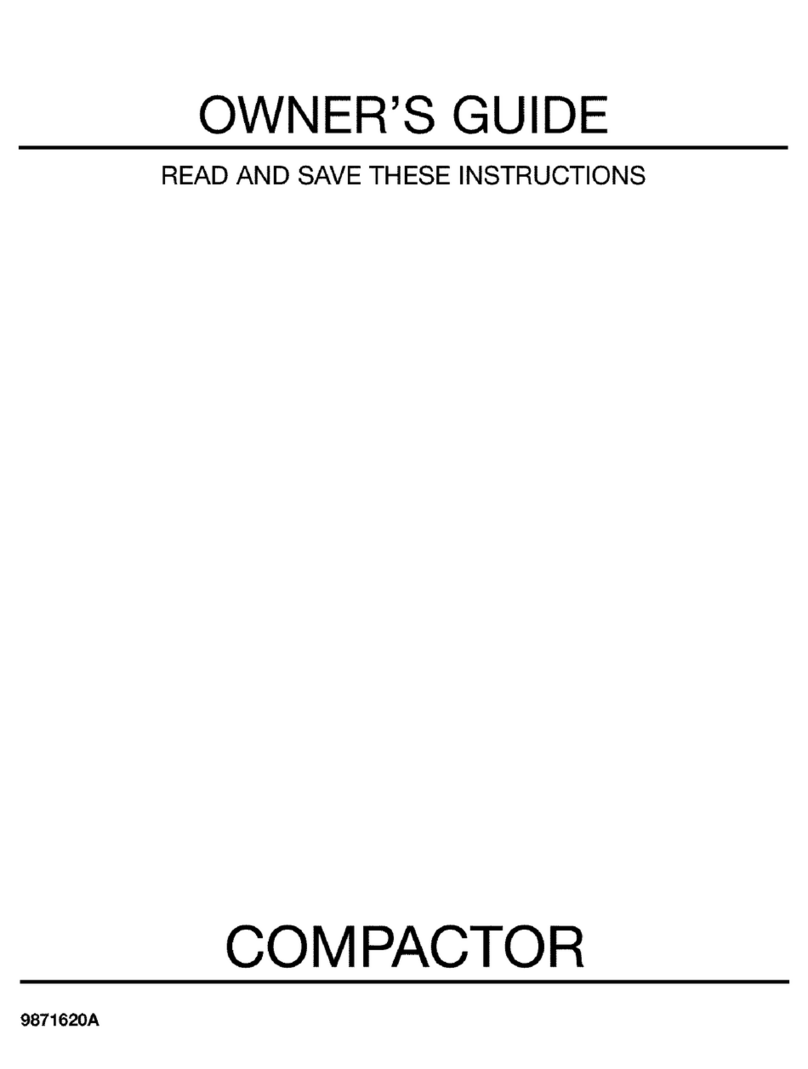
Frigidaire
Frigidaire MTC500RBM3 owner's guide
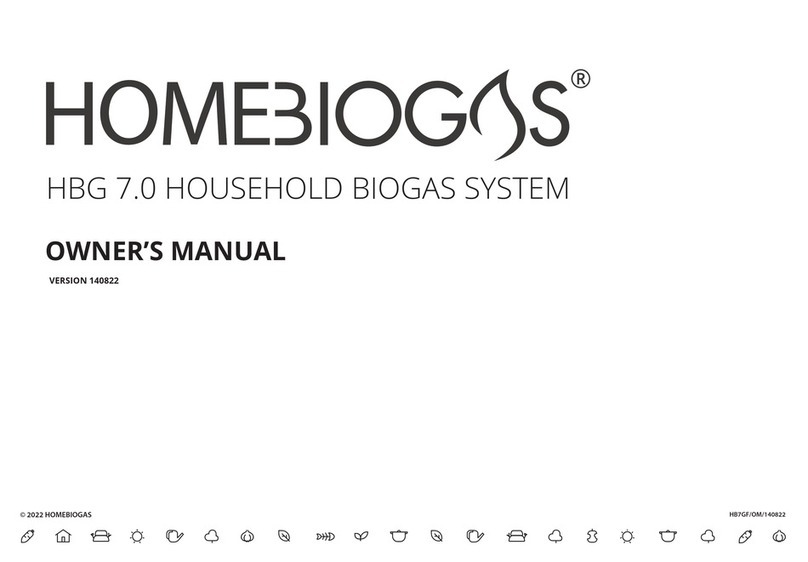
HOMEBIOGAS
HOMEBIOGAS HBG 7.0 owner's manual

lamart
lamart SENSOR Series PRODUCT INFORMATION AND INSTRUCTIONS
